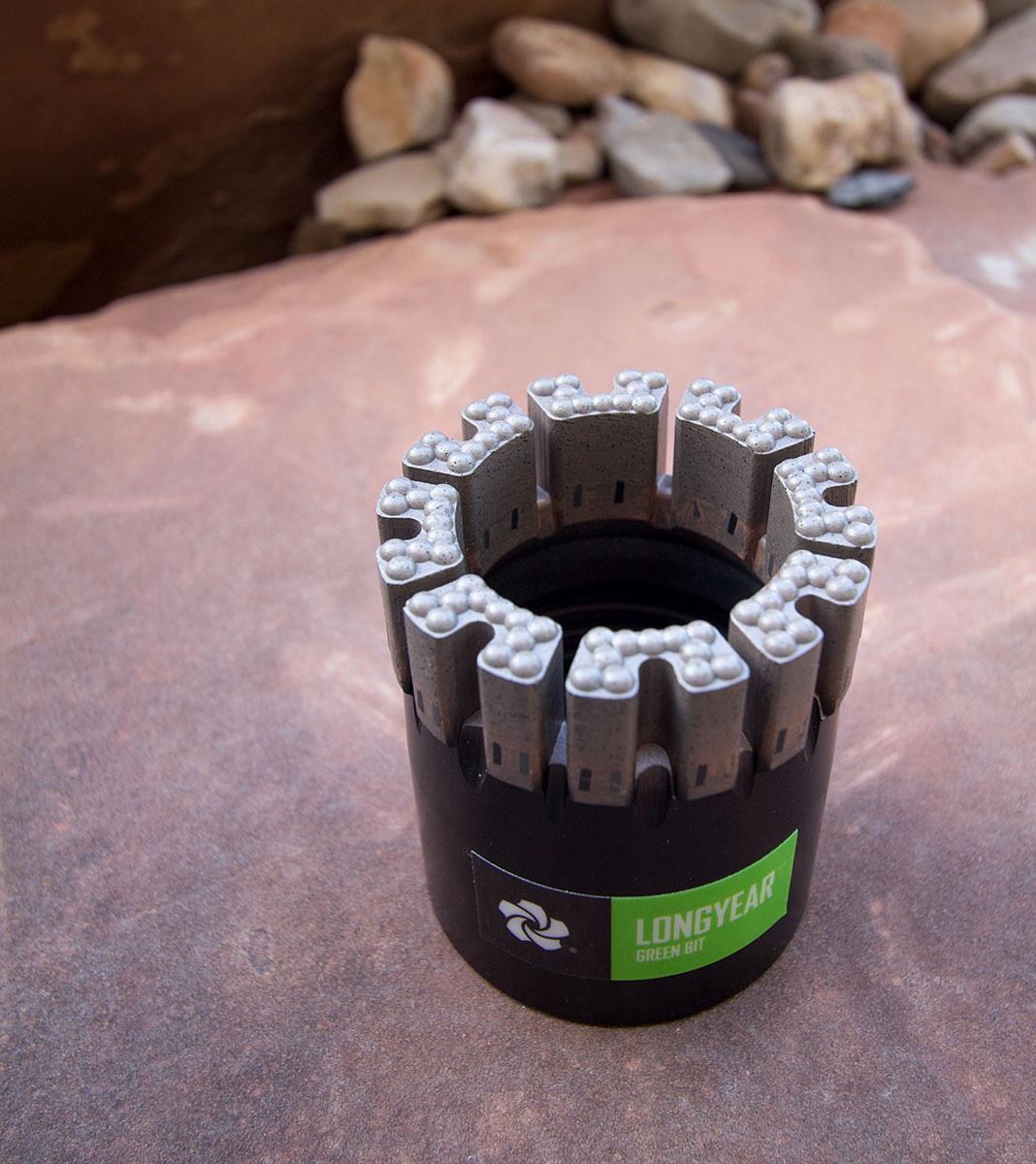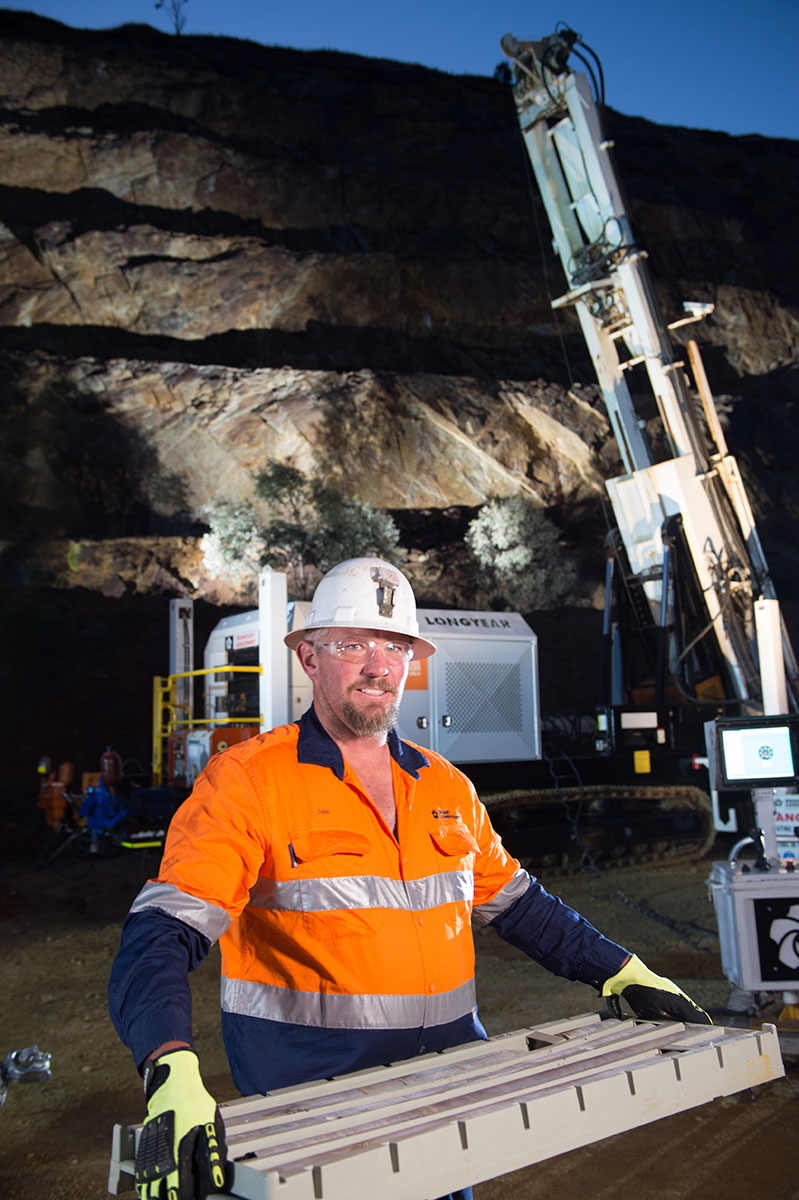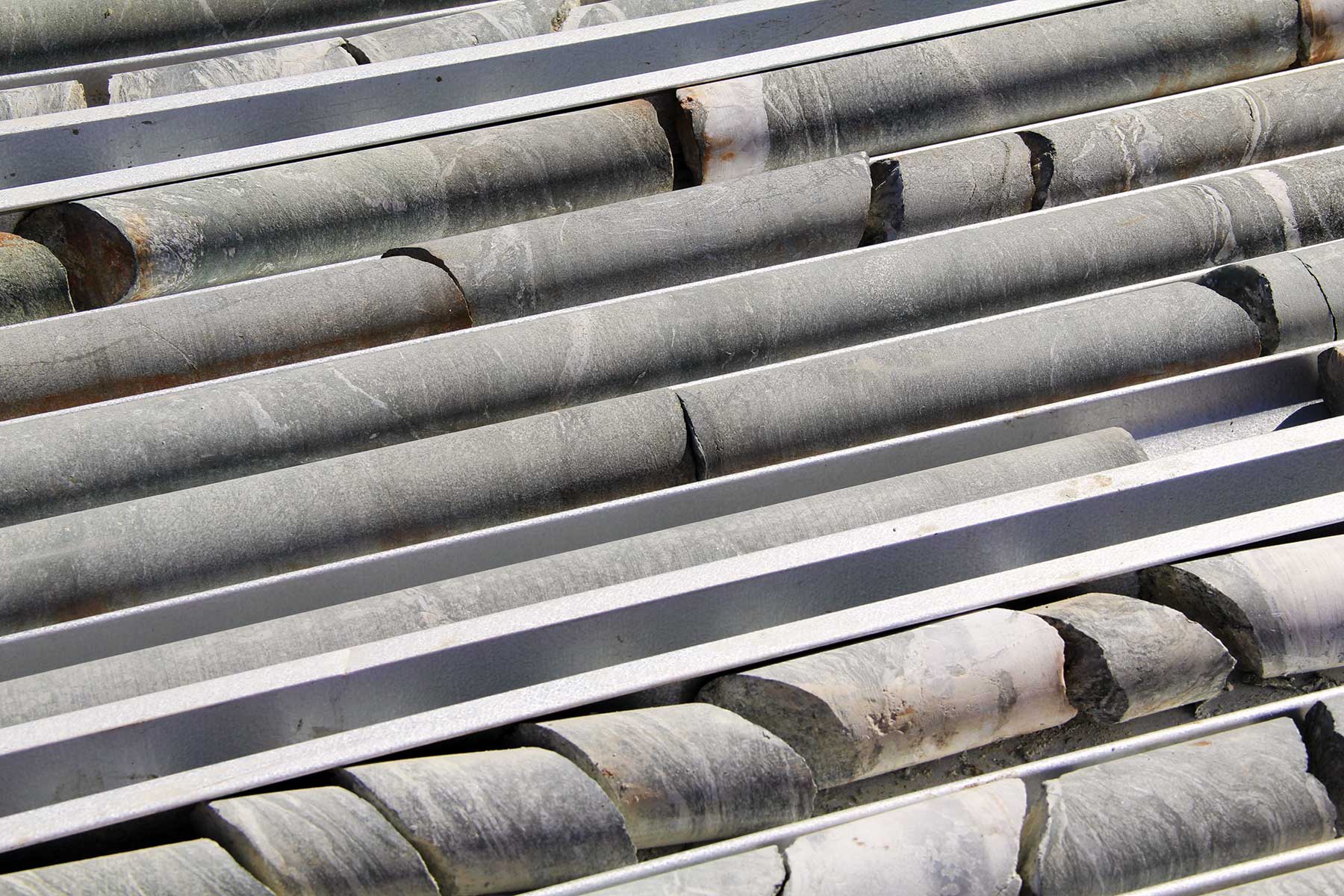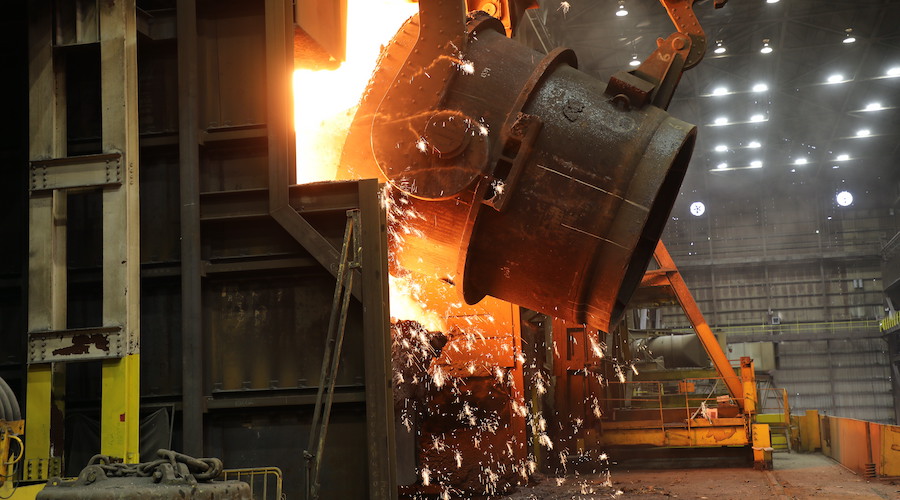Quantifying drilling efficiencies – Why drilling metrics matter

How do you measure success?
The mining sector continues to look for ways to improve efficiencies and lower costs and drilling companies are following suit. At the end of the day, the best drilling contractors know that it’s all about providing maximum value to the customer.Drilling the meters is only one part of the equation and other metrics provide guidance to total value.
To quantify drilling efficiencies, something must be measured. Which metrics mean the most and provide the best information on finding ways to improve performance and increase a mining company’s return on investment? This article focuses on the key metrics in exploration diamond core drilling: safety performance, schedule, price, and quality core recovery.

Safety Performance
Safety programs ensure that wherever a Boart Longyear driller or driller assistant goes to work, the client can expect the same safe results.
Safety is first and foremost. It’s a moral responsibility to provide the safest working conditions and a safety culture where each and every employee knows they have the right and the responsibility to stop any unsafe work. Boart Longyear’s investment in robust Environmental, Health, and Safety (EHS) programs pay off with consistently improving incident rates (having fewer reportable incidents) and lowered severity ratings of the incidents that occur.
An incident can be categorized as recordable or lost-time, but the severity rating is a key factor that insurance companies consider. This is their first indication of the actions and culture a contractor brings to the site. An ancillary benefit of improving incident rates is a lower insurance rate and these tangible cost savings from drilling safely are passed on to the client.
Safety programs ensure that wherever a Boart Longyear driller or driller assistant goes to work, the client can expect the same safe results
For customers, a contractor’s safety performance also affects the mine’s safety performance record. If there’s a haul truck incident, it doesn’t affect the drilling contractor, but if the drilling contractor has a recordable or lost time incident it affects both the safety performance of the drilling contractor and the customer (mine site) because it happened on the mine’s property.That consistency and value in safety is a big reason clients choose Boart Longyear™ Drilling Services. The safety commitment, culture, and programs at Boart Longyear align with their own, and client-specific programs are easily embedded as Boart Longyear employees are well-versed in adopting and working within the highest safety standards.
Price
When evaluating a contract’s value, it’s tempting to assume the hourly prices from the drilling contractor represent the total cost. This negates the value proposition of a well prepared, resourced, and time-sensitive contractor. There are additional costs to consider such as support staff including safety personnel, geology staff, and drilling program managers, as well as costs for drill pad construction, water hauling, supervision, drilling mud, surveying, and equipment rentals. While these costs aren’t in direct control of the drilling contractor, inefficient safety and operating practices can impact these additional costs and can easily overrun any initially perceived savings.
Schedule
A key metric affecting cost is the number of feet or meters drilled per shift. An estimate of feet/meters per shift is used to calculate the schedule based on the number of shifts required to complete the drilling program. The customer uses this calculation to schedule onsite support personnel, support equipment (dozers/helicopters etc.) and any other services for the program (camp/fuel etc.).
When the drilling contractor drills more efficiently, thus completing the drilling program in a shorter amount of time, the customer can leverage savings on their support costs. If the drilling takes longer and the schedule isn’t met, costs go up as a result of the drilling contractor being onsite longer to accomplish the required feet/meters. That’s the key metric – the footage based contract stays the same, but costs go up if the drilling contractor takes longer to achieve the feet/meters needed. The drilling contractor still gets paid roughly the same amount, but the customer’s costs go up. A recent example of this had a Boart Longyear crew jump into an unfinished project after the initial, lower-priced contractor struggled to complete what should have been a six-week project. At week eight and only 1/3 of the way complete, Boart Longyear was called in and completed the remaining drilling for the project in only four weeks.
Boart Longyear Drilling Services is currently measuring all the different increments that make up a 12-hour shift to find efficiencies in each of those individual steps – bit on bottom, charging the rods, wireline time, shift changes, transportation, mud programs, etc. By measuring each step in the drilling program, additional efficiencies can be identified and savings shared with the customer.
For example, wireline activity takes up a significant amount of time during each shift. It’s necessary to retrieve the core, but how can we do it faster – how can we pull the tube faster without damaging the hole or slipping core? Can we figure out a way to make the tube head drop faster without knocking the crown off the bit when the tube lands?

This is part of Boart Longyear’s commitment to Operational Excellence, a program in place using the Hard Work Cycle – achieving drilling efficiencies through continually looking for ways to improve processes and think outside the box.
Downtime can be a big schedule issue and directly affects the fixed costs of having support equipment and personnel onsite during the drilling program. Minimizing downtime is a key goal. From the contractor’s perspective, the loss of billable time directly impacts the bottom line.
The lack of production also adds unbudgeted costs to the client’s program, a clear lose-lose situation. Having a solid preventable maintenance program and an adequate inventory of critical spare parts is a positive hedge against what can occur.
Boart Longyear Drilling Services has protocols and processes for what’s called a “rig-down” status. It is all-hands on deck to get the issue resolved. Whether it’s a hydraulic failure, an engine has gone down, or some other breakdown like a staffing issue, there’s a sense of urgency to ensure the customer is served in the best possible way. Whether it’s mechanical or otherwise, the protocol is to get the issue resolved within 24 hours. If that means someone or something needs to get on a plane, that’s what happens to keep downtime to a minimum. A good preventive maintenance program helps, but it’s what you do in the face of a breakdown that matters.
Quality core recovery
Core recovery is the end product. It’s ultimately what the customer is paying for, so this metric is key to measure the drilling program’s success. If there’s not quality core in the box, there’s no value to the customer. In the end, the data from that core is the value to the mine. If core recovery is insufficient, so is the value provided.
The driller also has to know his equipment, watching the gauges and listening to the rig, recognizing when it’s doing the job and when it isn’t.
Drilling and retrieving quality core depends on the expertise of the driller and the condition of the tooling and equipment. First, the driller’s knowledge and understanding of the ground conditions is imperative. This information guides the driller’s decisions in selecting the correct equipment, tooling, bits, etc. to smoothly drill, penetrate quickly, and recover the core intact.
In addition, Boart Longyear operates a robust drilling fluids management plan. The mud program incorporates the driller’s knowledge of the ground condition and the challenges it presents. Understanding the ground condition and the equipment, the driller tunes into his drill using his instrumentation and the feedback the rig provides to analyze what is happening downhole. For complicated and technically challenging ground conditions, where core recovery is not going as planned, Boart Longyear drillers leverage the experience of the drilling fluids company. Reputable drilling fluids providers can send out an engineer to check the drilling fluids systematically. The old saying that two heads are better than one is key to solving core recovery issues. The two teams work together to figure out what changes to the fluids and drilling equipment are necessary to get the quality core recovery and penetration desired.

The driller also has to know his equipment, watching the gauges and listening to the rig, recognizing when it’s doing the job and when it isn’t. When encountering a core block – when the core just doesn’t want to penetrate up into the barrel – the driller can continue drilling, but all he’s doing is grinding up the core. Instead of drilling 5 feet and getting 4 inches of core recovery he can stop and look for answers. This is a big step for drillers who are paid according to productivity. Drillers are programmed (you could even say they’re wired) to get the most productivity. It takes a smart and knowledgeable driller to stop going after the feet/meters and deliver maximum value by stopping to focus on core recovery. In difficult ground, it’s best to pause and evaluate the core barrel assembly, drilling technique, and the drilling fluids program. That practical approach ensures value to the customer.
To learn more about retrieving quality core, listen to INSITE Podcast Episode 4: Quality Core, where 35-year industry veteran, Robert Jex, discusses the importance of quality core, how things can sometimes go wrong when retrieving core, the impact of not retrieving quality core, and some troubleshooting tips for core recovery.
The role of innovation and new technology
Through the years, new innovative technologies have helped improve drilling efficiency. For example, the Genuine Q™ Wireline core retrieval system introduced by Boart Longyear back in 1953 revolutionized the diamond drilling industry. The system increased productivity on the work site and made tripping core from the bottom of the hole safer for the drilling assistant. The advantages of the genuine Q™ system quickly generated industry-wide adoption of Boart Longyear’s wireline technology.
Boart Longyear consumables have been equally innovative. The recently launched XQ™ wireline coring rod threads are stronger, last longer, and provide easier make and break for improved productivity and bottom line savings.

XQ™ wireline coring rod
The high productivity coring system features a W-Wall™ coring rod which is 30% lighter – increasing depth capacity and reducing driller fatigue when manually tripping rods. The new NXQ™ and HXQ™ W-Wall coring rods feature patent-pending, double-upset tubing, with faster wireline tripping speed. The Quick Descent™ head assembly and the industry-leading Longyear™ color series diamond coring bits are also examples of recent innovations that improve productivity. Each system component increases shift capacity and productivity, delivering increased efficiencies.
Industry-leading top drive coring rigs and hands-free rod handling equipment offers both productivity and safety. Answering the demand for innovative rod handling, the FREEDOM™ Loader and top drive coring rig combinations provide simple and fast rod tripping that is 100% hands-free.
Additionally, Boart Longyear has invested in an Operational Excellence team and platform for continuous improvement to develop the next generation of efficiency and productivity enhancements in the mineral exploration industry. A key component of the Operational Excellence mindset is the Hard Work Cycle and reporting. The Hard Work Cycle reporting includes meeting with clients to go over feet/meters per shift, any downtime hours and the cause. Reviewing the metrics with our clients and showing areas where we can improve productivity on our side and theirs provides a unique and compelling transparency.
The beauty of measuring drilling metrics is that you have data to discuss what’s happening on the drill site and look for ways to improve efficiencies and lower costs.
For example, measuring all of the aspects of a drill site might give visibility to the number of hours of lost drilling/productivity resulting from site access issues. Blasting, ventilation issues, and cage delays are examples of issues affecting productivity that are controlled by the client, but working together minimizes their impact and increases drilling efficiency.
Why drilling metrics matter
The beauty of measuring drilling metrics is that you have data to discuss what’s happening on the drill site and look for ways to improve efficiencies and lower costs. Boart Longyear knows that it’s all about providing the maximum value to the customer
The biggest metric that might impact whether you win additional contracts is, “Are they happy with the outcomes of the drilling program?” Was the project completed safely, on schedule, providing quality core that provided the information necessary to make decisions about future exploration or mine development? Were any issues resolved to their satisfaction and transparent reporting provided?
Drilling metrics matter because key performance indicators measure how well a customer was served. Measuring what was delivered quantifies the customer’s satisfaction and provides goals for future projects.
More News
{{ commodity.name }}
{{ post.title }}
{{ post.date }}



Comments